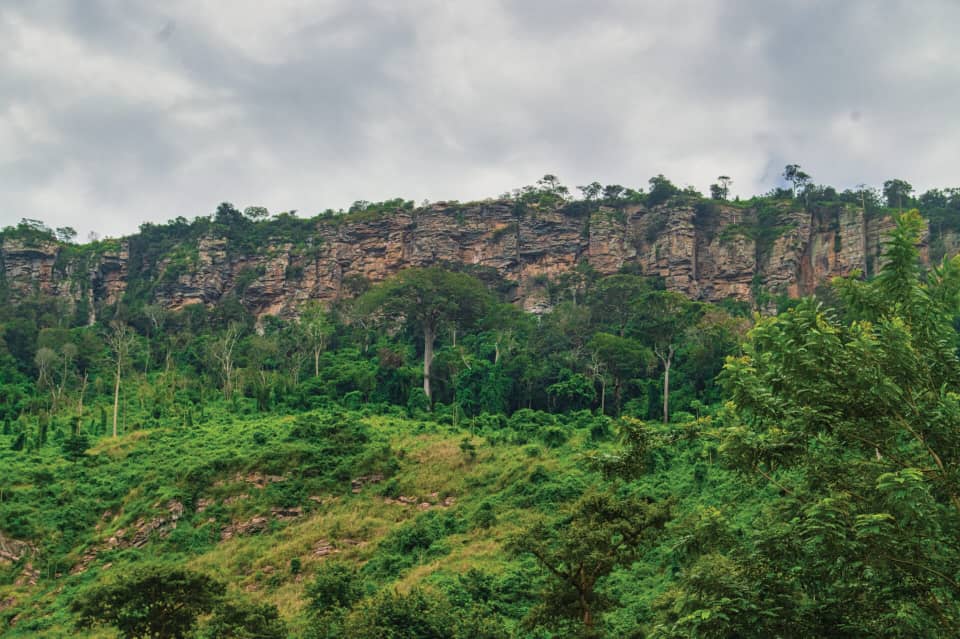Climate Change & Energy
Ghana Moves To Restore Critically Endangered Talbotiella Gentii Tree
Source: ghenvironment.com - February 10, 2021

Yongwa Forest Reserve
Ghana is making a giant stride to increase the population of the critically endangered Talbotiella gentii tree and restore degraded forestlands in the Eastern part of the country.
This was contained in a report published by BirdLife International titled “The Africa Report 2020”. BirdLife International is a global Partnership of non-governmental organisations (NGOs) striving to conserve birds, their habitats and global biodiversity, working with people towards the sustainable use of natural resources. In Africa, it is aligned to the four pillars of the BirdLife strategy which include Species, Sites and Habitats, Ecological Sustainability and People and has within this framework, developed positive linkages between birds, biodiversity and the livelihoods of people.
According to the Africa Report 2020, the Talbotiella gentii is a species endemic to Ghana and listed on the IUCN Red List as Critically Endangered. This is because the natural range of the species has been extensively destroyed by wildfires, incursions by people and subsequent exploitation of forested areas, resulting in reduced populations and increased fragmentation.
The report identified that, currently, 15 out of the 28 known stands are now extinct, with the major threats being farming and charcoal burning.
“To halt this trend, the Ghana Wildlife Society (GWS) (BirdLife in Ghana), in partnership with the cement company GHACEM Ltd. and the Forest Services Division of the Forestry Commission of Ghana, is currently intensifying conservation efforts to save Talbotiella gentii”, the report said.
The report revealed that, “the restoration project began in 2018 and established 5,000 seedlings of Talbotiella gentii to cover an area of 10 ha of degraded forestland of Yongwa and Sapawsu Forest Reserves. The seedlings are planted according to the Modified Taungya System (MTS), in which trees are interspersed with farmers’ crops in the forest. It has been established that T. gentii seedlings grown with crops establish faster than those planted alone. Already, 2,000 young trees covering an area of 3.95 ha have been successfully planted in Yongwa and Sapawsu Forest Reserves and are being monitored”
Martin Kusi Manu, the GWS project coordinator for the in-situ propagation of Talbotiella gentii noted that, the programmme has been a priority area for the Ghana Wildlife Society and currently officers are monitoring transplanted Talbotiella gentii seedlings on six Modified Taungya plots at the Yongwa and Sapawsu Forest Reserves, all in the Eastern Region.
Solomon Tetteh from Yongwa village said: “This project has increased our knowledge of Talbotiella gentii. We previously used to fell the tree for charcoal and fuel wood, but with the current enlightenment from Ghana Wildlife Society, we know that their numbers have reduced and we are helping to restore the population in the forest by also planting this tree in our farms.”
According to the report, key to the successful restoration was experimentation in germination trials, prior to establishment in the Yongwa and Sapawsu Forest Reserves.
“This provided information on the early stage of the tree’s development, which proved critical for propagation efforts. In addition, there is continuous monitoring of the species and subsequent experiments will be conducted. Intercropping with food crops was identified as one of the key factors for the survival of the planted out Talbotiella gentii”, it said.
“Consequently, the species was intercropped with maize and plantain on separate farms. Talbotiella gentii and plantain intercrop was observed to provide better nourishment and optimum shade, thereby decreasing mortality in the dry season, while Talbotiella gentii and maize intercrop experienced high mortality”.
This key finding the report noted, would be critical in helping the Forestry Commission of Ghana, institutions and individuals to adopt the practice of intercropping Talbotiella gentii with plantain to establish the tree at an early stage of growth.
Ghana Wildlife Society and Partnership
The report said, Ghana Wildlife Society has also entered into a partnership with GHACEM to promote sustainable practices and conservation of biodiversity in their quarry operations. GHACEM funded the initial tree nurseries and provided funds for an additional 3,000 seedlings to complement the initial 2,000 seedlings planted.

Some of the nursed T. Gentii trees. Image by Ghana Wildlife Society
The restoration is also supported by the Forest Services Division (Somanya Forest District), which provides forest guards for various activities at the two forest reserves. To help conserve the remnant populations of Talbotiella gentii in the wild, GWS has received funding from the Franklinia Foundation to undertake more research and inventories of the remnant populations, and to continue in situ propagation across the country.
Good News for Ghana and Africa
In her message to the Africa 2020 report, Patricia Zurita, CEO BirdLife International noted that, the report contains inspiring stories of success from its partners, demonstrating that even small actions at local and national level can go a long way in contributing to the global environment and development agendas.
“I am proud of these highlights that show just a sample of the extraordinary work the BirdLife Partnership is implementing across Africa. From saving the Marais TanoéEhy Forest in Cote d’Ivoire, to the listing of the Finima Nature Park as a Ramsar site, to empowering local communities in Morocco and nurturing the youth in Zambia, the diversity of our work shows our commitment to looking for local solutions that have global impact. While we know we have a long way to go, I am confident the commitment of our Partners and our work towards our common agenda, will help us go far”, she added.
 Some of the nursed T. Gentii trees. Image by Ghana Wildlife Society
Some of the nursed T. Gentii trees. Image by Ghana Wildlife Society


 Yongwa Forest Reserve
Yongwa Forest Reserve
